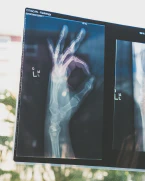Natasha''s Adoption Journey

Adopting Natasha: A Story of Love, Courage, and Toughness
Adoption is a life-changing decision that requires immense love, courage, and toughness. In the video script, we see the heartwarming story of Gene and Gayle, an American couple who decided to adopt a young girl from Korea named Eun-Sook. Eun-Sook later chose the name Natasha after watching a “Rocky and Bullwinkle” cartoon on the American Air Force station.
Gene and Gayle were determined to make Eun-Sook a part of their family, despite the language barrier and cultural differences. They started studying Korean the moment they received their first letter from Eun-Sook, and they even bought Korean clothes to hug her culture. When they finally met Eun-Sook, they spent a lot of time huddled over a dictionary to communicate with her.
Their journey was not without challenges. One of the most harrowing experiences they faced was when their hotel in Korea caught on fire, and they were on the 11th floor with their adopted children. Gene and Rick, a friend of theirs, had to think fast and improvise a way to survive the smoke and flames. They soaked towels, used room service menus to cover the vents, and put blankets at the bottom of the door.
Despite the challenges, Gene and Gayle’s love for their adopted daughter never wavered. They even went the extra mile to make Eun-Sook feel at home in their family. They taught her English, enrolled her in school, and introduced her to their extended family and friends. They also hugged Eun-Sook’s culture by taking her back to Korea and allowing her to reconnect with her roots.
The story of Gene, Gayle, and Eun-Sook is a testament to the power of love, courage, and toughness. It shows that no matter what challenges come our way, we can overcome them with determination, creativity, and a lot of heart.
Overcoming Language Barriers: How Gene and Gayle welcomed Eun-Sook into their family
One of the challenges faced by adoptive parents is communicating with their newly adopted child, especially if they come from a different country and speak a different language. Gene and Gayle, the adoptive parents of Eun-Sook, were determined to learn Korean so they could welcome her into their family and make her feel at home. They started studying Korean the moment they received their first letter from Eun-Sook and spent a lot of time huddled over a dictionary during their trip to Korea.
When they finally met Eun-Sook, now called Natasha, they used gestures and simple words to communicate with her. They showed her how to use a knife and fork and taught her how to return the utensil lessons. They even learned Korean cooking and bought traditional Korean clothes. Gene went as far as doing a little tile work in the kitchen with a message that said, “Once upon a time, there was a beautiful girl that came from the hills of Korea to live happily ever after in Atlanta.”
Their efforts paid off, and Natasha learned English in just three months. She even entered seventh grade at her own age level and became very popular quickly. Gene and Gayle’s determination to overcome language barriers allowed them to create a bond with Natasha that transcended words.
Surviving a Hotel Fire: The harrowing experience that bonded the family forever
In this segment of the video, we hear about the terrifying incident that the family faced during their vacation in Hawaii. One night, a fire broke out in their hotel, and the family had to evacuate their room quickly. They had to leave behind all their belongings and run for their lives.
The family recalls the chaos and panic they experienced while trying to escape the burning hotel. They also talk about the kindness of the hotel staff and other guests who helped them during the evacuation. The family was able to escape the fire safely, but they lost all their possessions in the blaze.
This incident taught the family to appreciate the value of life and each other. It reminded them that material possessions can be replaced, but loved ones cannot. They also learned the importance of relying on others and coming together during times of crisis.
The experience brought the family closer together and strengthened their bond. They now cherish every moment they spend together and are grateful for their lives. This incident is a powerful reminder of the fragility of life and the importance of valuing our loved ones above all else.
Playing God: The guilt and fear that come with making life-altering decisions
One of the most challenging decisions anyone can make is having to make life-altering decisions for someone else. In the video, a woman talks about how she had to make difficult decisions for her father when he was hospitalized after a stroke. She had to balance his quality of life with his wishes and medical recommendations. This situation is not uncommon, as many people find themselves in the position of making healthcare decisions for loved ones.
The responsibility of making these decisions can be overwhelming and comes with a lot of guilt and fear. People may feel guilty about the choices they make, and fear the consequences of those decisions. They may question if they made the right decision or wonder if they could have done more.
The woman in the video shares how she struggled with these emotions, but ultimately made the decision she felt was best for her father. She encourages others in similar situations to seek support from family, friends, or professionals to help cope with the weight of the decision-making process.
It’s important to remember that when making life-altering decisions, there is no right or wrong answer. Each situation is unique, and what may be the best decision for one person may not be the best decision for someone else. It’s crucial to prioritize the wishes and values of the person for whom the decision is being made and consult with medical professionals to ensure that the decision is informed.
In conclusion, making life-altering decisions for someone else can be a difficult and emotional process. It’s important to seek support and remember that there is no one-size-fits-all solution. By prioritizing the individual’s wishes and values and consulting with medical professionals, we can make informed decisions that we believe are best for our loved ones.
Waiting for Adoption: What Do You Do for a Year Before the Papers Come Through?
Adopting a child is a complex process that requires patience, perseverance, and faith. One of the most challenging aspects of adoption is the waiting period between submitting the paperwork and actually bringing the child home. In some cases, this wait can take up to a year or more, which can be an emotional rollercoaster for the adoptive parents.
During this waiting period, adoptive parents have to navigate through a maze of paperwork, background checks, and interviews. They have to prepare themselves mentally, emotionally, and physically for the arrival of their new child. They have to create a stable and caring environment for their child, but also balance their own expectations with the reality of the situation.
In the video, we see how the adoptive parents Gene and Gayle prepared for the arrival of Eun-Sook, their daughter from Korea. They went through a year-long wait, during which they spent their time getting ready for their new daughter. They decorated her room, read books about adoption and Korean culture, and learned some basic Korean words to communicate with her. They also took the time to travel to Korea and meet Eun-Sook in person, so that they could establish a connection with her.
The waiting period can be a challenging time, as adoptive parents are unsure of what the future holds. However, it can also be a time of hope, anticipation, and excitement. Adoptive parents can use this time to prepare themselves and their homes, and to learn about the child’s culture and background. Ultimately, the waiting period can help adoptive parents develop a deep sense of love and commitment to their child, which will help them through the challenges that come with parenting.
Cultural Immersion: How to Hug a New Culture
Adopting a child from a different country comes with the challenge of immersing oneself in a new culture. For Gene and Gayle, adopting Eun-Sook from Korea meant that they had to learn the Korean language and hug the country’s cultural traditions.
The couple took classes to learn the Korean language before traveling to South Korea to adopt their daughter. They also immersed themselves in Korean culture by trying the country’s traditional foods and customs. Gene and Gayle made sure that Eun-Sook grew up with an understanding of her Korean heritage, which included celebrating Korean holidays and learning about the country’s history.
However, cultural immersion is not without its challenges. Gene and Gayle faced difficulties communicating with their daughter’s Korean birth family due to language barriers. But they persevered and eventually found ways to connect with them through the help of a translator.
Adoptive parents should be prepared to learn about and hug their child’s birth culture, even if it means stepping outside their comfort zone. It requires patience, understanding, and a willingness to learn. But the benefits of cultural immersion can be immense, as it helps children build a stronger sense of identity and connection to their birth culture.
Overall, Gene and Gayle’s journey shows that hugging a new culture takes effort and commitment, but it can also be a fulfilling and improving experience.
From Korea to Atlanta: Natasha’s incredible journey to a new life
Natasha’s adoption journey was not an easy one, but thanks to the love, courage, and toughness of her adoptive parents, she was able to find a new home in Atlanta. Her journey began in Korea, where she was born and eventually placed in an orphanage. Gene and Gayle were determined to adopt a child, and after a long wait, they received news that a baby girl was waiting for them in Korea.
The journey to bring Natasha to Atlanta was a long one. Gene and Gayle had to navigate complex adoption procedures and cultural differences to ensure that they could provide a stable home for Natasha. They worked with adoption agencies, lawyers, and government officials to make sure that everything was done legally and ethically. Finally, after a year of waiting, they were able to bring Natasha home.
The journey didn’t end there, however. Gene and Gayle wanted to make sure that Natasha felt at home in Atlanta and hugged her Korean heritage. They made efforts to immerse themselves in Korean culture and learn the language, even enrolling Natasha in Korean language classes. They also celebrated Korean holidays and traditions and took trips to Korea to help Natasha connect with her roots.
Through all of this, Natasha has grown into a happy and confident young woman, surrounded by the love of her adoptive family. Her journey to Atlanta was not an easy one, but it is a testament to the power of love and toughness.
Family, Love, and Toughness: The heartwarming conclusion of the story
The final part of the story brings us to the present day and shows us the amazing family that Gene and Gayle have built together with their children. Natasha is now a successful adult who has a strong connection with her Korean roots and culture. She is grateful to Gene and Gayle for all the sacrifices they made to adopt her and provide her with a better life.
The family has been through so much together, and their bond has only grown stronger over the years. They have faced challenges, such as the hotel fire and the difficult decisions they had to make, but they came out of those experiences even more united and resilient.
Through their story, we see that family is not always about blood relations, but it can be about the love and connections we build with the people in our lives. Gene and Gayle’s love for Natasha and their commitment to providing her with a better life is a testament to the power of love and the toughness of the human spirit.
Their story also highlights the importance of cultural immersion and understanding. By hugging Korean culture and language, Gene and Gayle not only provided Natasha with a connection to her roots, but they also improved their own lives and broadened their perspectives.
In the end, their story is one of hope, love, and toughness. It reminds us that even in the face of adversity, we can come out stronger and more united if we lean on each other and hug the power of love and family.
Conclusion
The story of adopting Natasha and the journey of her new family, Gene and Gayle, was full of love, courage, toughness, and strength. It highlights the power of a family’s bond, their unwavering commitment to each other, and the lengths to which they can go to keep each other safe and happy.
Throughout the story, we saw how the family dealt with various challenges, from overcoming language barriers and cultural differences to surviving a hotel fire and making difficult life-altering decisions. But no matter how difficult the situation, they faced it together as a family and emerged stronger on the other side.
We learned about the importance of cultural immersion, language learning, and how to hug a new culture and make it a part of one’s life. We saw how love and patience can help overcome seemingly insurmountable challenges and how a supportive family can help make even the most difficult situations bearable.
Most of all, this story reminds us of the power of love and family. It shows us how we can find joy and happiness in life’s most challenging moments and how we can create a loving and supportive environment for those around us.
So let this story serve as a reminder that family is not always defined by blood, but rather by the love, care, and support we give each other. No matter what challenges we face, we can overcome them with love, toughness, and a strong sense of family.










